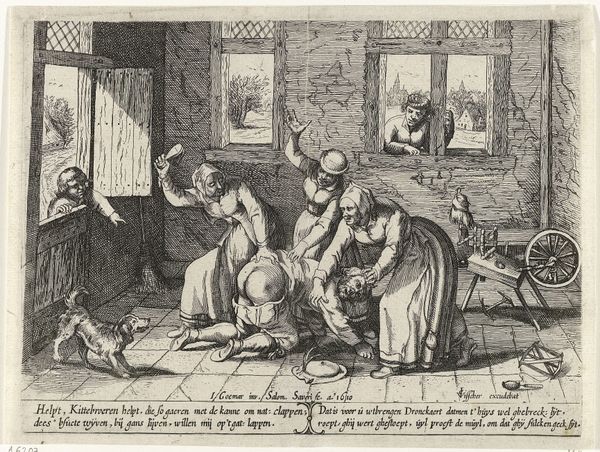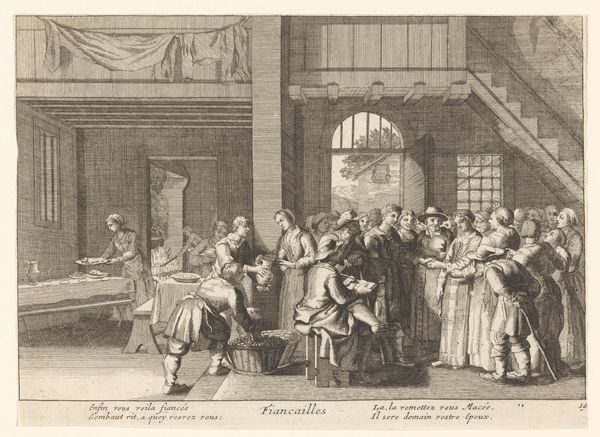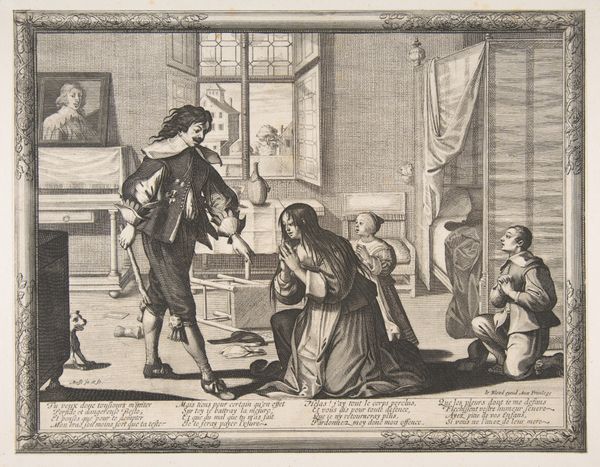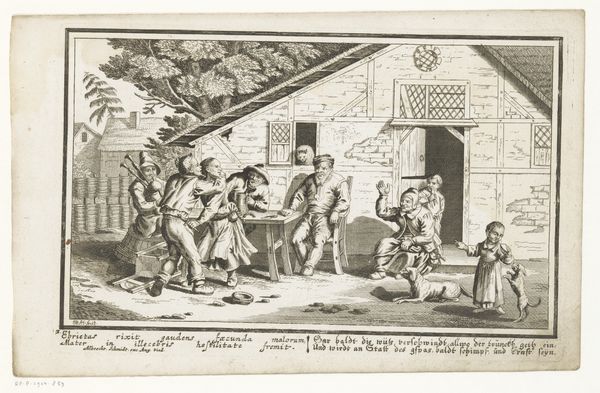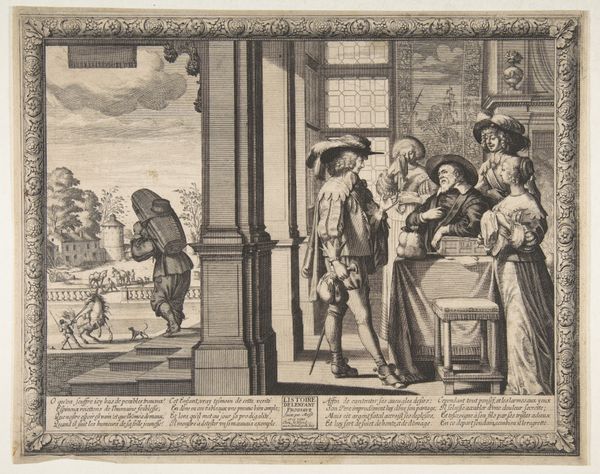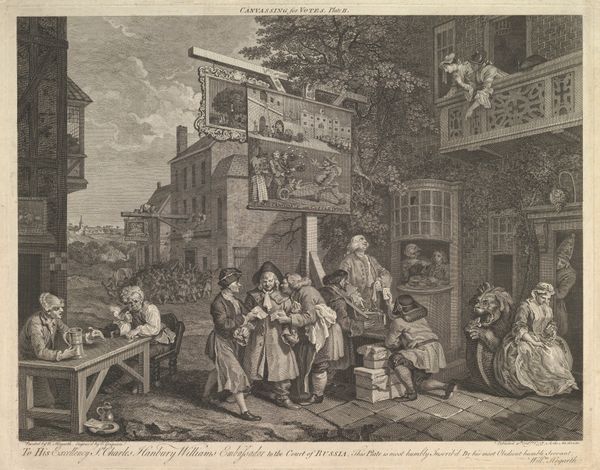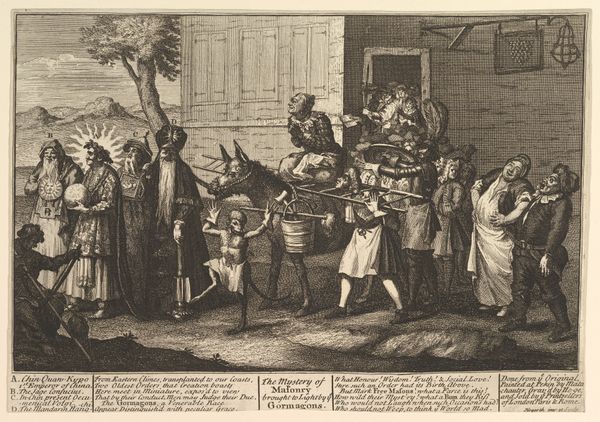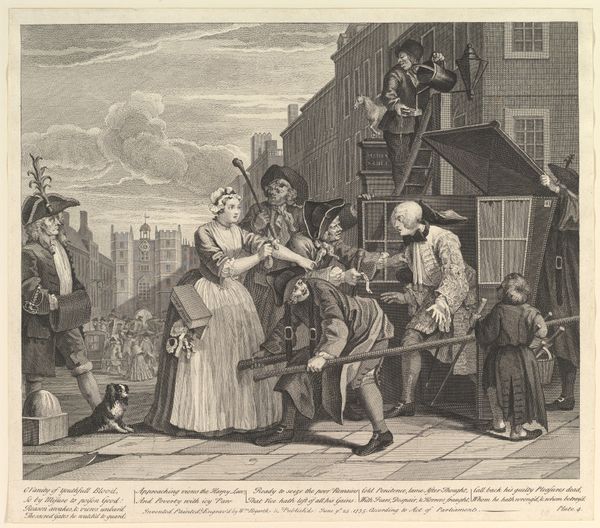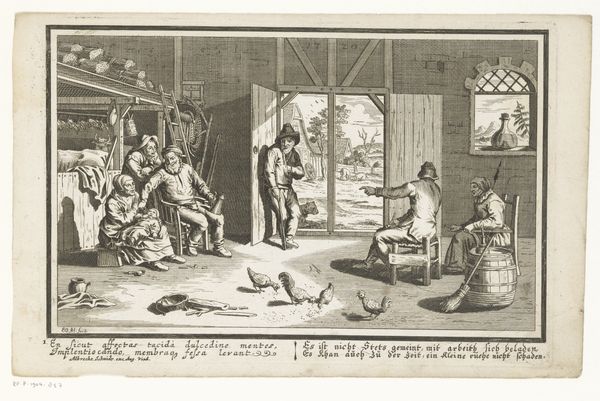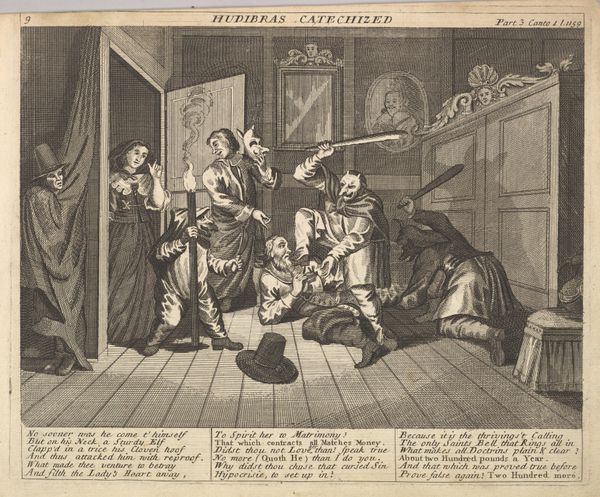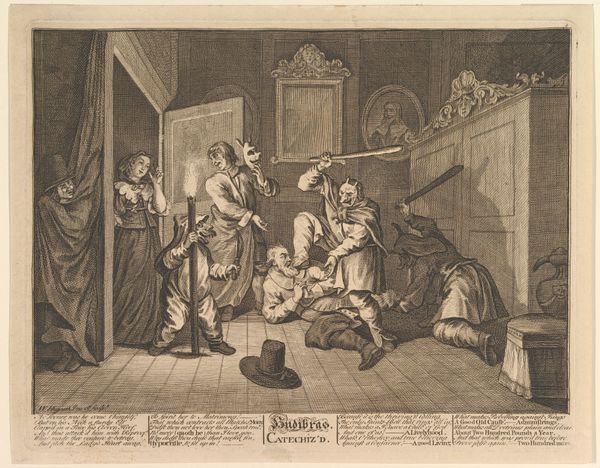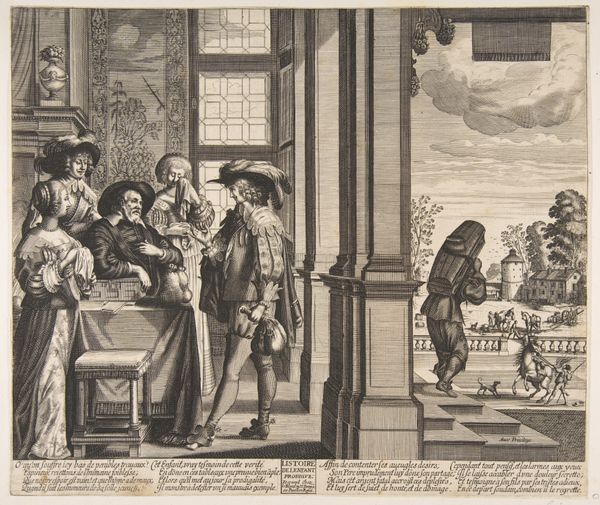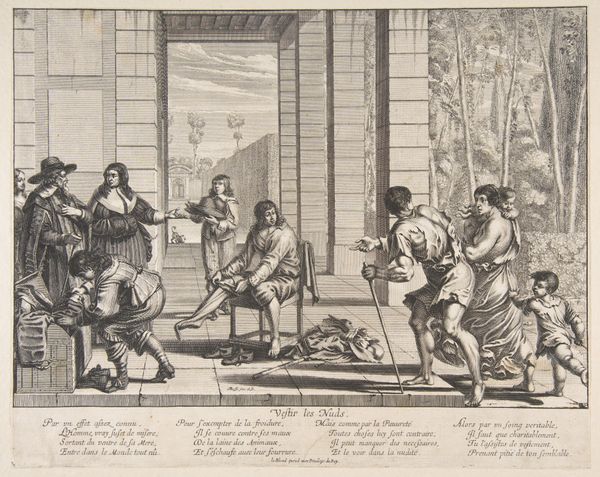
Hudibras in Tribulation (Plate 6: Illustrations to Samuel Butler's Hudibras) 1725 - 1730
0:00
0:00
drawing, print, engraving
#
drawing
#
baroque
# print
#
men
#
genre-painting
#
history-painting
#
engraving
Dimensions: Plate: 7 5/8 x 9 5/16 in. (19.4 x 23.7 cm) Sheet: 8 1/8 x 10 15/16 in. (20.7 x 27.8 cm)
Copyright: Public Domain
Curator: This engraving by William Hogarth, made sometime between 1725 and 1730, is titled "Hudibras in Tribulation," part of a series illustrating Samuel Butler's satirical poem. Editor: Well, what a scene. It’s got this sort of wonderfully chaotic energy, like a stage play gone hilariously wrong. It looks more like a theatre of cruelty to be honest, but one with bad actors, poor costumes, and worse plots. Curator: It’s certainly busy. Hogarth's using line and hatching to create depth and texture. The composition is divided – on one side, we see the figures in stocks, clearly figures of authority and on the other, the crowd... the mob almost, filled with varied expressions and attitudes. Editor: Those folks stuck in the stocks—are they symbols of a corrupt or oppressive regime? Like Hogarth is using their confinement to speak of larger restrictions, historical injustices or power imbalances… something Puritanical about the entire scene... Curator: Possibly, or perhaps Hogarth is ridiculing Puritanism and social hypocrisy as Butler did in the original poem. We are presented with Hudibras, the mock-hero, getting thoroughly humiliated. It is worth remembering that such stocks were the judicial norms for a very long time, though they might seem extreme by today's standard. Editor: Yes, right there—it almost becomes a broader commentary on social punishment, doesn’t it? The judgmental gaze of the crowd—very reminiscent of other, darker episodes in the West’s obsession with guilt and shame. Curator: Indeed, and think of the figure slumped over a bench on the right – utterly dejected. It echoes the consequences of challenging established norms. This scene feels timeless despite being rooted in a specific text and era. Editor: Definitely, it resonates in its depiction of humiliation and mob mentality. Makes you wonder, who are the real fools in this picture? Those in the stocks or those who find pleasure in their misery? Curator: A very pertinent question. Hogarth certainly offers plenty for us to reflect on. Editor: It has made me think about cycles of oppression, visibility, the theatre of politics. Fascinating that such old art remains such good food for contemporary thought.
Comments
No comments
Be the first to comment and join the conversation on the ultimate creative platform.
